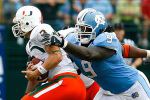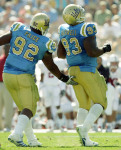Bruce Arena's Los Angeles Galaxy head north to BMO Field in Toronto to take on Toronto FC in a bid to further extend their lead in Major League Soccer.
The Galaxy (10-1-2, 32 points) settled for a scoreless draw with Toronto (5-4-2, 17 points) on May 15 at the Home Depot Center.
The match potentially sees Dema Kovalenko's return to the line-up. "It's nice to be back with the team again," Kovalenko said during training. "Any way I can get back and play, I'm just happy to be back.
"Whenever I come back, wherever Bruce uses me, I'm going to fight and compete like I always do. I'm going to try and get my spot, but the guys are doing well and we're winning.
"I just have to wait for my chance and I understand that. If I have to come off the bench and help the guys, that's fine, too. I don't like it, and Bruce knows that. I've missed a long time, and however they use me, I'll accept it. It's not a problem."
It seems very likely that not a lot of changes will need to be made to a side that currently holds the best record in MLS.
Toronto FC's Dwayne De Rosario leads Toronto FC with eight goals and three assists in 10 appearances but was held scoreless in their May meeting with the Galaxy.
Defender Nana Attakora is an imposing presence on the back line and will be a key player to watch. On the attack, Chad Barrett is dangerous, with four goals to his credit so far this season.
Stefan Frei had made 45 saves so far for TFC and has a 1.27 goals against average. His counterpart, Donovan Ricketts, has made 33 saves with a 0.33 GAA.
The Galaxy scoring attack is a little bit more diversified. Jovan Kirovski has scored three this campaign and Tristan Bowen two. Eight other players have scored at least one goal this season for Los Angeles.
Omar Gonzalez will not be in the lineup this week due to a suspension, so expect Sean Franklin to play a more important role for the G's against the Reds at BMO Field.
This match will cap off a slate of 10-11 matches in 43 days. I see the Galaxy starting this match on the right track with a win. They need this, after suffering a hiccup against Real Salt Lake.
Kickoff is scheduled for 4:30 p.m. PT and will be televised by Fox Soccer Channel.
The Summer Gauntlet Begineth
Three days after the Toronto FC match, the Galaxy face either AC St. Louis or the NSC Minnesota Stars of the USSF D2 Pro League in the U.S. Open Cup Third Round. On July 4, the Galaxy will face off against the Seattle Sounders, followed by an Open Cup quarterfinal on July 6 or 7 if they advance.
It's then back to league action on July 10 against New England, July 18 against DC United and July 22 against San Jose, followed by a July 27 home tie with the Puerto Rico Islanders at the Home Depot Center during the CONCACAF Champions League Preliminary Round.
For the month of August, there is a home contest with Chicago on Aug. 1, the away leg with the Islanders on Aug. 4, and the friendly with UEFA Champions League winners Inter Milan on Aug. 7.
Simply put...this is why you play the games.
A break for "Me Mum" and the Big Cat from Montego Bay
Midfielder Chris Birchall and goalkeeper Donovan Ricketts took advantage of the break to watch a little bit of the World Cup with friends and family back in Stafford, England and Montego Bay, Jamaica, respectively.
"I did a bit of work back home, so I didn't have the entire break off," Birchall clarified. "It was tough today, but it's always tough the first day back. You're trying to get your legs back from a long flight. I'm refreshed and thankful for the break.”
"For me, a break is always good," Ricketts said with a grin. "The middle, start, the end...I don't care. I'm always happy for a break."
And these two will need all the break time they can get. Once the summer gauntlet starts, rest will become a luxury, rather than a commodity.
Youth Academy Update
After an unimpressive outing against Chivas USA to begin their Super-20 League Campaign, the LA Galaxy Youth Academy Under-20's rebounded for three straight victories.
On Friday, June 11, the Galaxy trounced SUSA-Everton 3-0 before annihilating the Lancaster Rattlers 6-0 on Saturday, June 12. The latter came a day before the Rattlers' humiliating 15-0 annihilation by Chivas USA.
On Saturday, June 19, the Galaxy continued their run with a match over the Southern California Seahorses. A result of that match will be posted in the next installation of INS AND OUTS.
The Galaxy U-20s will next face the Poway Vaqueros at the Home Depot Center on June 24. Kickoff is scheduled for 5:00 p.m. PT.
The Galaxy Under-18s get to play some more as well, with the U.S. Soccer Development Academy Playoffs at the Bryan Park Soccer Complex in Browns Summit, North Carolina.
On Saturday, June 26, they take on FC Greater Boston at 12 p.m. ET. On Sunday, June 27, they face the Clearwater Chargers at 5 p.m. ET. And on Tuesday, the Galaxy U-18s clash with FC Dallas's U-18s at 11 a.m. ET.
On Koman Coulibaly's Komeuppance from FIFA
Koman Coulibaly, without a question, took victory away from the USA in their 2-2 draw with Slovenia. If this proved to jeopardize their chances in making the field of 16, he will be their scapegoat.
"If he is found to have made a serious mistake, especially one that affected the outcome, then he would be highly unlikely to play any further part in the tournament," a source is said to have told Yahoo Sports. "FIFA is determined to keep refereeing standards high and does not want high-profile mistakes."
In this case, it backfired. Big time.
“We’re all accustomed to the fact that if it’s an NFL playoff game, and there’s a call in question, there will be a statement by the league from the referees,” US national team manager Bob Bradley said on Saturday regarding the match. “But FIFA operates differently. Soccer is a different game.
“I think there are some aspects of it that are not made 100 percent clear that seems to add to the discussion about the game.
"From our end, we get used to that.”


